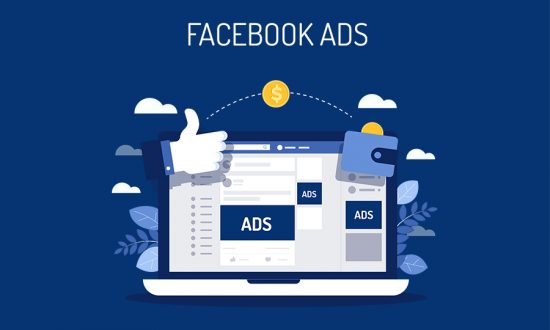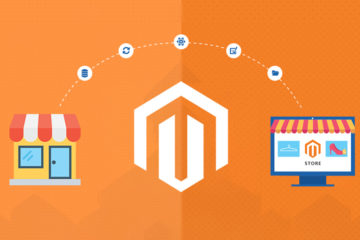Digital eCommerce advertising gives a significant opportunity for brands to reach their consumers, and all…
With Google Ads rolling out innovative features, advertisers are left without a clear understanding of the working of those features. Over the years working as an eCommerce agency, we found out that the advertisers use less than 40% of the features available to them.
Reap all the advantages that Google is offering and make sure your brand is approaching more customers with the following tips for Google Ads optimization.
Tips for Google Ads Optimization
Increase your audience reach, boost eCommerce traffic, and drive conversions by the implementation of the following Google Ads optimization strategies:
- Optimize keywords
- Use location targeting
- Make it simple to convert!
- Use ad extensions
- Test ad copy and landing pages
1. Optimize Keywords
Study the Journey of a Buyer
While choosing keywords for your ad campaigns, don’t forget to consider the stages in which shoppers are in their journey. The customers who are still in the initial stages of awareness and consideration are more inclined to search for broader keywords on their search engine than the customers who are in the decision stage.
Make use of the keyword planner tool by Google to make sure the right customers are viewing your ad. In case you want to raise brand awareness and reach, we suggest dodging broad match keywords.
Instead, target customers in the decision stage by optimizing the relevance of keywords. Long-tail keywords give countless combinations, assuring you to draw more traffic to your site.
Add Negative Keywords
Add negative keywords to prevent displaying your ad to customers searching for a particular word or phrase that you don’t want to associate with your business. Utilize the report of search terms to get some ideas about the negative keyword.
Add negative broad match, exact match, and phrase match keywords to your ad groups so that your advertisements surface in front of a suitable audience. However, avoid excessive use of negative keywords as it may lead your ads to reach fewer consumers.
2. Use Location Targeting
Improve your ROI by focusing your ad targeting right where you’ll get the suitable customers. Leverage location targeting settings of Google to select where you want to show your ad. Choose from:
- Whole countries
- Regions within a country, such as cities or territories
- Radius around a location
- Places of interest
- Google My Business locations
- Tiered demographics
- Your business locations
In case you don’t want your advertisements to show in some particular locations, you can do that by selecting the locations you want to suspend in your campaigns. And if you’re not sure whether location targeting will serve your business, inquire yourself if it’s economical and helps you attain more customers.
3. Make it Simple to Convert!
By making it simple, we intend to direct customers to the checkout in as few steps as possible. Give minimal choices within your Google ad so that consumers identify what to click within your offer.
Your CTA should be short and right-to-the-point. Keep it consistent with the shades of your brand while making it prominent at the same time. A bold CTA aims to guide buyers in taking the next move on the path to buying.
Make sure your CTA leads customers to a landing page corresponding with your offer. For instance, if a customer is searching for “computer keyboards,” then link your CTA (call-to-action) to a landing page with computer keyboards only. Providing excessive options to the buyers hinders their path to purchase and may even deter them from browsing your website.
Finally, try to avoid asking prospects to fill out various fields in a form. Although, marketers love to collect data but try restricting your form fields to 3 or 4.
4. Use Ad Extensions
Google AdWords offers several ad extensions created to boost the rates of conversion and improve the quality score of advertisement. Use these extensions to accommodate your audience with relevant information regarding your business before clicking at your ad.
Incorporate information like location, ratings, phone number, and more to provide a better understanding of your business to the searchers and help drive new leads.
5. Test Ad Copy and Landing Pages
There is always a scope to test something within your ads. Examine and compare the highest-performing ads to your other ads. Find out what serves you the best and use those tactics into your other advertisements too.
Also, test your landing pages to compare the performance of your advertisements. For instance, send half of your clicks to a particular landing page (your “control”) and send the other half to a separate landing page to discover which performs better. In case, the second landing page works better, then set it as your new “control” to test the other pages against it in the coming future.
Wrap-up
Reach larger customers, enhance ad performance and, eventually, boost conversions by following the above-stated tips for Google Ads optimization. Ultimately, you want your advertisements to be relevant, helpful, and beneficial to the consumer. Achieve this by making it easy for buyers to convert.
Leverage your eCommerce reports by Google Analytics to get an insight into the activities of your visitors. Absorb those insights and continue testing to see how you can enhance the performance of your ad.
Here at Axtrics, we create Google Shopping, Search, and Display campaigns to boost website traffic with a low CPC (cost-per-click). If you are keen to know more about how we can help your eCommerce store boost ROI, reach us through the comment section given below with any queries or concerns. Our team will be in touch.














Leave a Reply